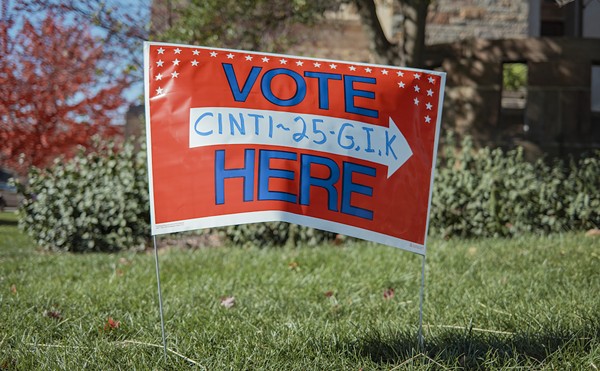Functioning
I read Larry Gross’ Living Out Loud column about depression (“Listening to the Birds Sing,” issue of April 8). I have suffered from it for years now and take medication daily.
I’m a functioning depressed person, but to those around me I’m simply a “functioning person.” There’s a stigma associated with the word “depressed,” so I don’t say it out loud very often, not even to close friends or family.
How does one get rid of this stigma? Probably with the help from those willing to come forward and talk about their depression — people like Gross.
I know I’m not alone. His column confirms that one can pull themself up while dealing with this illness. — Kay Bronson, West Chester
He’s With Us
Regarding “Listening to the Birds Sing” (issue of April 8), just to begin with, I can’t imagine the strength it would take to write about these struggles.
Even though I don’t know Larry Gross personally, I feel I know him all too well through his CityBeat columns over the years. I, for one, am happy that he’s with us and has his life back. — Dan McCord Oakley
NAACP Always Was Conservative
Christopher Smitherman is correct about the innate conservatism of the NAACP (“Smitherman and Finney in Bed,” issue of March 25).
From its inception, the NAACP has been a bastion of conservative attitudes and behavior. It was only because of its goals and objectives that Southern. whites tagged it as “radical.” Within the black community, the NAACP never enjoyed the success it could have, except perhaps in the South, because of its relative intolerance of “radical” behavior.
CORE, SNCC, SCLC, the Black Panthers and other community-based organizations came about because of a conservative NAACP. In the 1960s, the NAACP Youth Councils and the “young turks” tried to change the direction of the organization and nearly succeeded. The “old guard” still had a trick or two and literally turned off the lights in Boston at the national convention when rebels got too close to overturning the status quo.
I was intimately involved in that struggle, and I can attest to the association’s serious conservatism. One of the reasons Cincinnati was granted the 1970 national convention was to cement that victory by inundating the convention with Southern delegates, whose travel and lodging was paid by the “old guard.” As a result, we were seriously outnumbered and outgunned. I was co-chairman of that convention along with Dr. Bruce Green and Roger Stewart.
The legalistic approach of the NAACP is what caused the young people in Nashville, Tenn., to shun the Youth Council, to which they all belonged, and start a new nonviolent movement under the tutelage of Dr. Jim Lawson, who was the primary proponent of Gandhi and non-violence; indeed, he was Martin Luther King’s guru. Remember, that’s where the sit-ins began as a youth strategy.
The young people in Greensboro, N.C., most famous of the sit-in crews, were Youth Council members, as were the Little Rock Nine and others around the nation. My point is that because of the NAACP’s innate conservatism young people were compelled to “do their own thing,” and consequently a movement was born that segued into the anti-war and love movements of the late-1960s. — Herb Smith, Avondale





